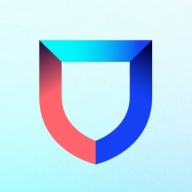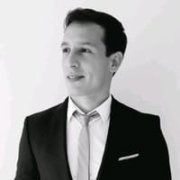


Rapid7 Metasploit and Lacework FortiCNAPP compete in the cybersecurity solutions space. Metasploit has a slight edge in vulnerability exploitation capabilities, while Lacework stands out in cloud security insights due to its comprehensive monitoring tools.
Features: Metasploit is highly regarded for its extensive exploit library, integration with NMAP for network scanning, and open-source flexibility that offers robust penetration testing capabilities. It is effective in testing vulnerabilities efficiently across different systems. Lacework FortiCNAPP highlights its capabilities in cloud security monitoring with features like anomaly detection, compliance support for multiple security standards, and thorough cloud security visibility, which provides users with actionable security insights.
Room for Improvement: Rapid7 Metasploit needs improvement in updating exploits more rapidly and enhancing GUI effectiveness. Users call for better automation and integration with other security tools. Lacework FortiCNAPP can improve its data governance, strengthen integrations with SIEMs, and enhance alert management functionalities to offer more intuitive user experiences.
Ease of Deployment and Customer Service: Metasploit is typically deployed on-premises and relies heavily on local infrastructure, offering community-driven support which varies in effectiveness. Lacework FortiCNAPP aligns with public cloud environments, providing robust deployment options that come with mixed customer service reviews, with some users seeking more responsive support.
Pricing and ROI: Rapid7 Metasploit offers a cost-effective open-source version, although the paid version poses pricing challenges. Its ROI remains attractive for newcomers to vulnerability assessment rather than seasoned professionals. Lacework FortiCNAPP is considered moderately expensive but offers good ROI through valuable cloud security features, appealing especially to cloud-centric organizations seeking detailed security insights.



Zafran Security integrates with existing security tools to identify and mitigate vulnerabilities effectively, proving that most critical vulnerabilities are not exploitable, optimizing threat management.
Zafran Security introduces an innovative operating model for managing security threats and vulnerabilities. By leveraging the threat exposure management platform, it pinpoints and prioritizes exploitable vulnerabilities, reducing risk through immediate remediation. This platform enhances your hybrid cloud security by normalizing vulnerability signals and integrating specific IT context data, such as CVE runtime presence and internet asset reachability, into its analysis. No longer reliant on patch windows, Zafran Security allows you to manage risks actively.
What are the key features of Zafran Security?
What benefits can users expect from Zafran Security?
In industries where security is paramount, such as finance and healthcare, Zafran Security provides invaluable protection by ensuring that only exploitable vulnerabilities are addressed. It allows entities to maintain robust security measures while allocating resources efficiently, fitting seamlessly into existing security strategies.
Lacework FortiCNAPP provides robust cloud security, combining vulnerability management and multi-cloud insight with user-friendly controls, machine learning detection, and compliance support.
Lacework FortiCNAPP specializes in cloud security by merging machine learning anomaly detection with agent-based vulnerability management to offer detailed alerts and compliance reports. Its comprehensive approach allows continuous monitoring across AWS and Kubernetes, providing insights from an attacker's perspective. The platform offers automation and seamless Slack integration, facilitating collaborative and efficient cloud security management. Users value its ability to handle multi-cloud environments and scan IAC scripts, configurations, and compute nodes across AWS and GCP.
What are the key features?Organizations across sectors leverage Lacework FortiCNAPP for cloud security, focusing on compliance, security posture, and vulnerability management. It is widely used for monitoring AWS and Kubernetes environments, scanning IAC scripts, configurations, and securing compute nodes. It supports multi-cloud security posture management and log ingestion, enabling companies to maintain strong cloud infrastructures without dedicated security layers.
Attackers are always developing new exploits and attack methods—Metasploit penetration testing software helps you use their own weapons against them. Utilizing an ever-growing database of exploits, you can safely simulate real-world attacks on your network to train your security team to spot and stop the real thing.
We monitor all Vulnerability Management reviews to prevent fraudulent reviews and keep review quality high. We do not post reviews by company employees or direct competitors. We validate each review for authenticity via cross-reference with LinkedIn, and personal follow-up with the reviewer when necessary.